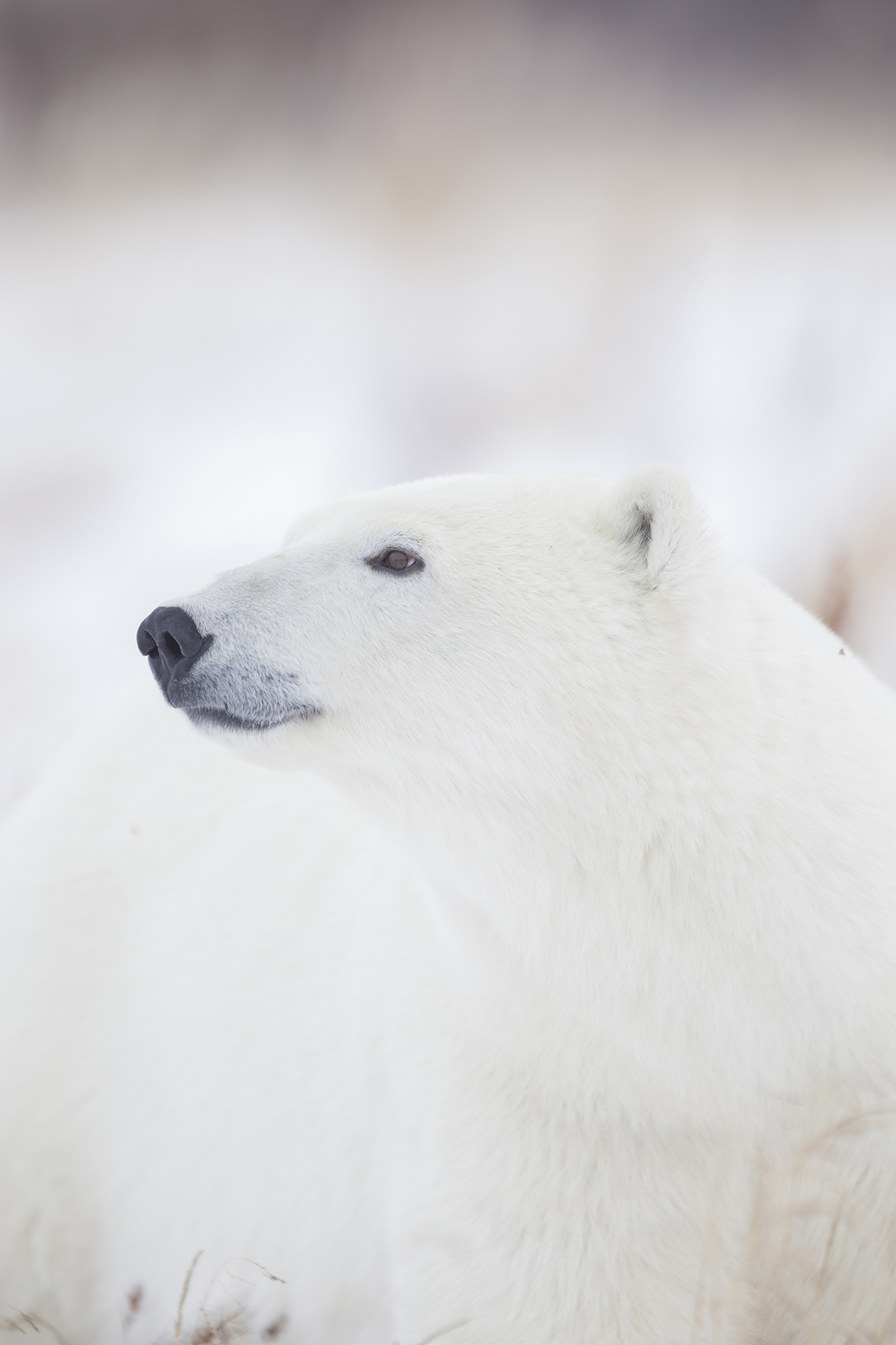Scientific name: Ursus Maritimus
Average length/height: 2-3m/6-10ft
Average weight: 350-680kg/770-1496 lbs
Characteristics
Furry, large and beautiful, the whole world knows polar bears are one of the ‘must see’ creatures on earth. Polar bears have a double layer of hollow, clear fur that reflects the light and helps insulate along with their black skin. Their large paws aid in weight distribution so they don’t fall through the ice.
Less commonly known is that polar bears have a third eyelid helps them to see under water and protects from the sun glare on the ice (WWF, n.d.).
Territory/Geographical Locations
Polar bears are marine mammals that follow the sea ice, but when the ice in Hudson Bay melts by late June or early July, the bears are forced ashore. They prowl and sleep along the coast near our Lodges until the Bay freezes over again in November and they can make their way back out on the ice in search of their favourite food: seals. While out on the ice, polar bears are known to walk as far as 100 miles from shore in search for food.
Hudson Bay provides habitat for the most southern and most accessible populations of polar bears in the world. The polar bears found in and around Churchill are part of the Western Hudson Bay population.
Polar bears are found mainly above the Arctic circle, though Churchill, known as the Polar Bear Capital of the World and a very popular place for tours, is slightly below this latitude at 58°. Other popular places to see them include Norway, Alaska and Russia, often with the use of ships approaching ice shelves. The furthest south polar bears have been found is in James Bay, Canada.
Population & Reproduction
Polar bears can live 25-30 years in the wild, however, reaching old age is no easy feat living in such harsh environments. Polar bears reach breeding maturity between the ages four and six years old, though females are typically ready to breed by age five. There is a lot of competition for male bears and they typically don’t get a chance to breed until a few years after reaching sexual maturity. The largest and toughest bears get to mate with the females.
Mating occurs in the late spring on the sea ice. If the female is not fat enough, the blastocyst will reabsorb, and she will try to gain the weight for next year. The rest of the spring and summer is spent with the female preserving and packing on weight for her pregnancy and postpartum hibernation. While not a true hibernation, the mother does live in a den with her cubs, which are born between late November and early January. Once they’ve reached approximately three months of age, they’re old enough to head out onto the ice with mom so she can hunt for a few months and replenish her fat stores.
Female polar bears typically have one or two cubs. If they do give birth to three cubs, it isn’t common that all three will survive to maturity. That first year of motherhood is tough. She has a short window on the ice before it melts to catch enough seals, store up fat and keep her babies safe from male polar bears and other predators like wolves. She is constantly on the move. Polar bear cubs stay with their mom for about two years, meaning she can only get pregnant every three years at the most.
Currently there are approximately 22000-31000 polar bears worldwide (WWF, n.d.). They are classified as threatened or endangered in many subpopulations.
Diet
A polar bear’s main diet is seals due to their high energy/fat content. Polar bears need a lot of energy to sustain their mass and travel such far distances. They aren’t interested in prey that requires too much energy to chase and not enough fat to make it worth it. Walruses are also prey, albeit a somewhat more dangerous prey for them. In recent years, they’ve been observed and filmed hunting for beluga whales by jumping off rocks into the water during the summer months. As opportunistic hunters, they’ll also scavenge on beached whales, berries, bird eggs and anything else they come across.










